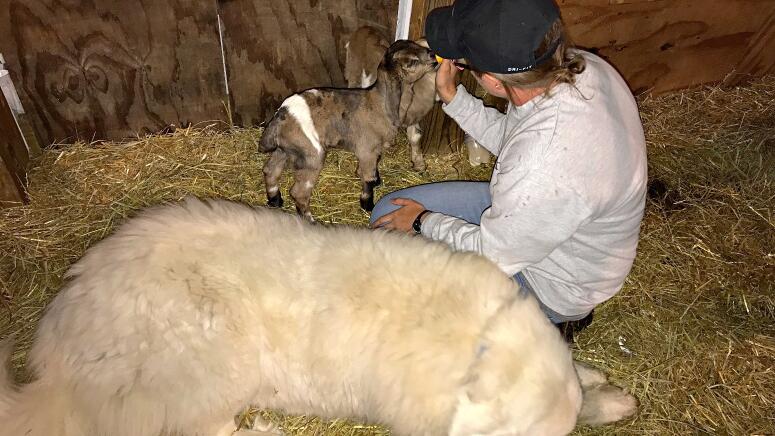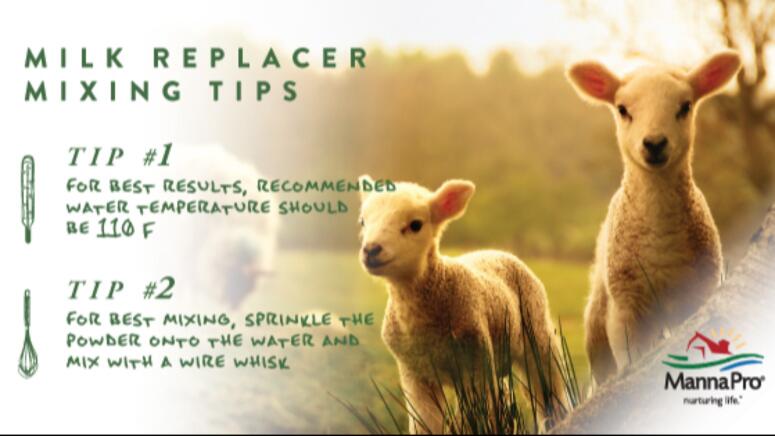Congratulations! You’ve welcomed sweet little goat kids into this world! They really are such a joy to care for and raise. From their little hops to booming personalities, I can honestly say that raising goats on our little homestead brings us great joy!
On our homestead, we raise a small herd of registered Nubians, seasonal breeding goats, who we breed typically for a spring kidding.
As with everything on the homestead, preparing for every possible outcome is key. So, what do you do if your goat has too many kids to raise herself? What happens if she sadly rejects her kids and now you are left to raise them? Do you know how to appropriately feed and raise the kids if your doe has contracted a transmissible disease such as CAE (Caprine Arthritis Encephalitis), or if she tragically passes away from kidding or shortly after? In all of the aforementioned situations, it would be crucial to know how to appropriately mix, measure, and feed milk replacer.
First and foremost, if you have to step in at birth or shortly thereafter to raise any goat kid, it is pivotal that each kid receives the appropriate amount of colostrum to ensure they have a great fighting chance at life. Colostrum is the first form of milk produced by the dam, and fed the first few days of life before the true milk comes in. Colostrum is full of very important nutrients such as Vitamin A, minerals, fat and maternal antibodies known as immunoglobulins. These antibodies found in colostrum contain proteins that aid in immune system development for the goat kid and help fight off diseases.
If you do have a tragic accident occur during kidding, or even if you are worried your doe isn’t producing enough colostrum, you can and should step in and provide a powdered colostrum replacer. Birth weight will vary across the different breeds and will also vary depending on the number of kids born, but it is safe to say that most standard goat breeds will birth kids that are on average 6-8 pounds.
When mixing colostrum milk replacer, body weight should be taken into consideration so having a scale is best. You should always follow mixing instructions on the back of the colostrum replacer bag when you can, and when that isn’t possible, a good rule of thumb we like to follow is 2 ounces of colostrum per 4 pounds. It is best to split this into 2-3 feedings over the first 24 hours after birth. To help provide adequate intake and digestion, it is important to feed colostrum at the kid’s body temperature (approximately 102-103 degrees F).

Good job! You have overcome your first hurdle. Naturally, the body will transition from colostrum to what we call the true milk over the next few days. If you had to feed a colostrum milk replacer chances are you will need to be bottle-feeding a milk replacer for a minimum of 8 weeks before weaning your kids off. Buckle up.
Some folks have had luck sourcing goat milk from other farms and some even use store bought whole cow milk. The two things to be taken into consideration with those options are availability and cost. Additionally, if you are sourcing goat milk from another farm to feed it is paramount that the adult doe is tested and disease free. If you remember, that is one reason why some folks have to switch to milk replacer in the first place. Whole cow milk bought at the store can be costly, hard to store and time consuming to retrieve. When we have to bottle feed any goat kid, we always use milk replacer. It is safe, easy and accessible.
Before discussing feeding amounts and frequency, let’s talk a bit about the goat and their unique digestive tract. Like other animals such as cattle and sheep, our beloved goats have a four-quadrant stomach consisting of the reticulum, rumen, omasum, and abomasum. I note this because just like with any food change or alteration it should be done slowly, but goats can be even more finicky. It’s always good to keep this in mind!
After the first few days of life and feeding colostrum replacer, you can begin the transition to a milk replacer like Manna Pro Kid Milk Replacer. As previously mentioned, milk replacer contains everything the kid needs in a balanced form for a great start at life! It is a great option when you need to bottle feed or even transition to bottle feeding. This is the choice we go with when we are in this situation, and we always use Manna Pro milk replacer.

Let’s talk mixing logistics. I’ll let you in on a few tips we have picked up on over the years. It is recommended to always make the milk replacer fresh for each feeding and I assure you, it does matter! It is easier to mix, and you can ensure that each of the goat kids are getting the appropriate amount that they need. If you are feeding more than one kid, its great to mix the milk replacer up for all of them and then measure out the individual bottles. Warm water (recommended temperature should be 110 degrees F) is best for mixing, rather than using cold water and heating the mixture up. By using warm water and a whisk you will get a uniform and easily digestible replacer to feed the goats! Each goat kid will be different and have slight different needs, but again, a good rule of thumb is 3-4 feedings per day for the first few weeks at least.
In general and at a minimum, goat kids should be nursing or fed a milk replacer for 2 months or 8 weeks. This is the recommended minimum and for us we extend this to at last 3 months if we can.
It is such a joy raising goats and being their caretaker if needed! They provide so much for us in many ways so it is always an easy decision to give them the best start at life! If you find yourself in the position of needing to bottle raise your goat kids, don’t worry as it is an amazing option in raising healthy and happy goats!

